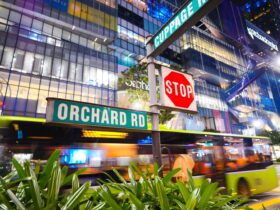Without announcement, Tor Marancia neighbourhood in south Rome became apparent that this was an introduction to a massive project: the Big City Life.

Up until a few years ago, the Tor Marancia neighbourhood in south Rome had been considered ‘one to avoid’: a zone of public housing notorious for deprivation and high crime rates. But one morning in 2015, those passing Tor Marancia were suddenly met with a 12-meter-high mural taking up the entire facade of a building.
“Change perspective. The street is your new museum.”
In a span of two months, 22 of these murals went up in this area. They had been created by 10 of the most important international exponents of street art in the world, and together made up an open-air museum of wall paintings. Each piece includes plaques displaying the artist’s name, the title of the work, the technique, and the year in which it was made – perfectly resembling a traditional gallery.

Big City Life: The Journey
Big City Life was the natural evolution out of the “Ostiense District” project. This was conceived with the aim of creating a pathway of street art through Ostiense, connecting two districts of Rome (Testaccio and San Paolo), using art to redevelop a run-down area that had formerly been the industrial heartland of the city.
The conception and development of both projects came from 999Contemporary, a non-profit cultural institution that specializes in the development of artistic activities, and to date has overseen the creation of more than a hundred murals. Their work has now expanded into many areas of “off the beaten track” Rome, such as the neighbourhoods of San Basilio, Tor Pignattara, Quadraro, and Tor Bella Monaca.
Big City Life: The Artists
Among the artists who have worked in Rome are leading exponents of international street art, such as Italy’s Blu (judged by The Guardian to be one of the 10 best street artists in the world), Vhils from Portugal, the Venezuelan SatOne, Spain’s Borondo, and Seth from France.
The Tor Marancia District
Without a doubt, the Tor Marancia district has had new life breathed into it. Economically disadvantaged residents have been involved, and have taken part in other regeneration activities such as redeveloping the paths and flowerbeds.

The Ostiense Area
Ostiense has also seen significant improvement; in recent years the entire area has seen the development of numerous cultural institutions – both public and private. The latest include the opening of the Roman headquarters of NABA (Nuova Accademia di Belle Arti), a private university that collaborates with MIT in Boston, and the new university centre of Rome 3.
Museo Centrale Montemartini
Sitting silently right in the centre of all this activity is the Museo Centrale Montemartini, the second seat of the famous Capitoline Museums. This gallery occupies what was once Rome’s main power plant, and inside ancient artworks are contrasted by the industrial archaeology of generators and turbines. Meanwhile in the background, gasometers draw a skyline completely different to the Rome of the imagination – looming industrial Colosseums on the horizon.
Porto Fluviale Occupato
Around the area of the museum are numerous graphics studios, recording studios, and music schools, which are flanked by the opening of nightclubs and trendy restaurants. This is Rome’s night spot, where the young and free go to party. This activity spans out around the “Porto Fluviale Occupato“, an alternative cultural centre that grew out of a squat. A former military barracks building here is now entirely covered by a mural by Blu, called “Rainbow of Faces”. This has defined the whole neighbourhood as one of the most culturally interesting in Rome.

Garbatella
Between Tor Marancia and Ostiense is the “village” of Garbatella. This was created in 1920 as a “garden city” in the model of those created by the British urban planner Ebenezer Howard. Over the years this fascinating, self-contained suburb has managed to keep its community identity intact. Mahatma Gandhi visited in 1931 to see the area’s exceptional social and community qualities, and today the place offers the opportunity for charming strolls that make you completely forget its location, just outside the historical heart of the Eternal City.
For years we have heard that certain experiences must be made in person to truly understand a place. But is visiting a monument like the Pantheon, with its 8 million visitors per year, surrounded by distracted, noisy tourists with their selfie-sticks, truly the way to experience and understand Rome? How much truth actually remains in a place overrun with such predatory tourism? Or is it in fact better to experience Rome by seeking out its lesser-known quarters and finding the ancient history in relative solitude and silence, untroubled by “industrial” vacationers?
By Fabio Barilari: award-winning architect, illustrator, and founder of C-Rome: Tours, Art and Architecture Experiences in Rome. C-Rome specializes in unusual walks around lesser-known parts of the city, deeply enlightening walks in the historical centre, and classes in architectural illustration. To meet Fabio, and to arrange an expertly guided tour of the areas described in this article, please visit https://c-rome.com.
ADVERTISEMENTS










Leave a Reply